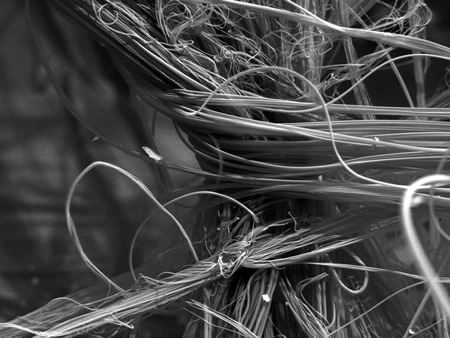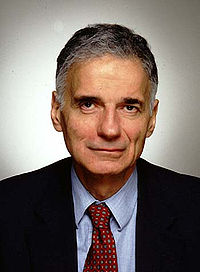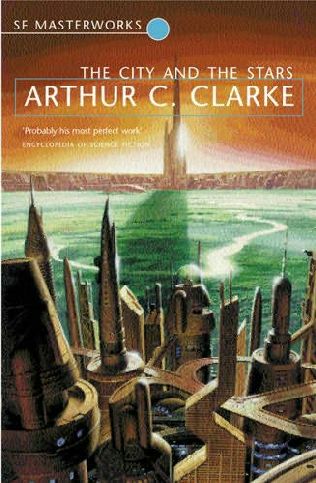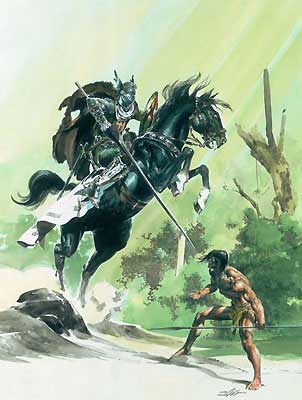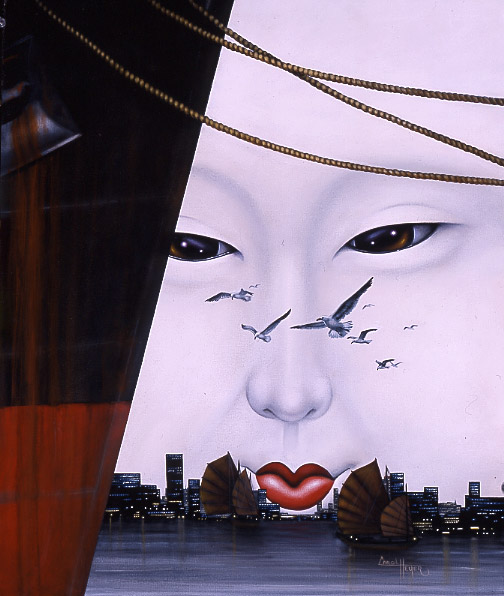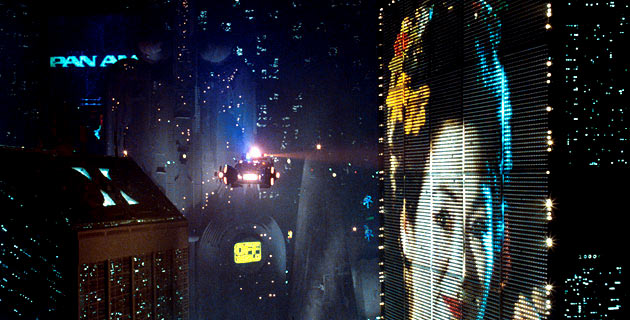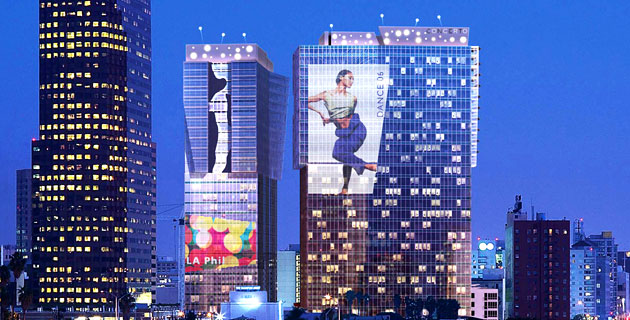check it out – some changes.
Author Archives: Lara Leah Maestro
r.i.p.
critical response two: this great wen, this trickster city
It is a signal of pressures in the human psyche for a new creature to evolve, powerful and yet baby-like, original and yet formless (The Trickster God and Fool), It is the need for a revolutionary quality of the imagination to evolve among us, an imagination which seeks to rethread the basic fabric of the inner (and ultimately the outer) world… (Van Sertima, 1995)
In a [Trickster] world good and bad exist, but it is hard to know sometimes which is which. (Phelan, 1996)
This picaresque character misses no chance for chicanery… as though he lives in a world that offers him no other chance for survival… to cope with an unstraight and crooked world one needs unstraight and crooked paths. (Van Sertima, 1995)
A foray into the unapologetic mess of New Crobuzon’s sprawling mass, bulbous and bulging at the seams in haphazard and cluttered fashion, buildings oozing and streets littered with the detritus of its denizens, is an exercise in caution and suppression of scatalogical repulsion. The city teems with countless bodies of all possible make (or remake). The demography is anarchic and unpredictable; diasporic populations mark their territory along capricious borders. Khepri mix with vodyanoi mix with cactacae mix with wyrman mix with garuda mix with human, the boundaries between interactions skirting the line between thinly-veiled disgust, to polite condescension, to hidden passion, to ignorance. The city and its inhabitants are imbued with a sense of “metamorphic liminality” (Van Sertima, 1995); New Crobuzon is a “mongrel city” (Mieville, 2000).
Mieville has described the city as set in an “early industrial capitalist world of the fairly grubby, police state-y kind” (Marshall, 2003), a phrase that brings to mind a DIckensian vision of Gotham city, where the villains run the city officially (through Bentham Rudgutter and his Fat Sun fat cats) and unofficially (through Mr. Motley and his drug-running schemes), and the good guys exist like vigilantes from Sherwood Forest. Heroes are ambiguous and scarce. Against a confluence of negative forces ranging from the coldly calculating (the Construct Council) to the calculatingly murderous (Mr. Motley) to the murderously hungry (the slake-moths), Isaac Dan der Grimnebulin and his rag-tag band have few allies. Even their allies seem to have inexplicable motives. In Jack Half-A-Prayer we find an intriguing example of Bas Lag’s answer to the caped crusader, a mysterious apparition, a “cloaked figure slipp[ing] out of some shadow, appearing like an eidolon, manifesting as if from nothing” (MIeville, 2000), but it is the Weaver’s character that provides the threads, so to speak, from which the entirety of New Crobuzon is created. A higher power like the city itself, excessive and complex. A trickster god for a trickster city.
The trickster as trope has numerous incarnations, most of them not of human flesh. As rabbit, raven, coyote, and interestingly enough, mantis, one of the trickster’s most famous guises is as a spider. Even housed within one form the spider trickster comes with many names: Anansi, Ananse, Annancy, a fitting habit for a shapeshifting creature, one who exists in many planes. Tricksters are anti-authoritarian darlings, shitting and eating and dancing and fucking and fighting, causing violence as easily as laughter. They are creatures to be learned from and lived vicariously through. Their exploits are by turns creative and destructive. Tricksters are “uniquely complex, ambivalent creatures, equalled only by humans in their multiplicity, grandiosity and desire” (Phelan, 1996). The trickster as bricoleur is a cut-and-paste creature – in New Crobuzon, literally that. A trickster’s traditional talents encompass those of spinning, both of realistic and metaphorical thread, and of spinning tales and the use of language – two qualities shared by the Weaver. The Weaver oversees the upkeep of the worldweb, the elaborate underlayer of the city:
The crawling infinity of colours, the chaos of textures that went into each strand of that eternally complex tapestry… each one resonated under the step of the dancing mad god, vibrating and sending little echoes of bravery, or hunger, or architecture, or argument, or cabbage or murder or concrete across the aether. The weft of starlings’ motivations connected to the thick, sticky strand of a young thief’s laugh. The fibres stretched taut and glued themselves solidly to a third line, its silk made from the angles of seven flying buttresses to a cathedral roof. The plait disappeared into the enormity of possible spaces.
The Weaver speaks in the poetic language of dreams, words running over and under and after each other in seemingly nonsensical patterns, absent of punctuation or order, which somehow make sense as a whole, sometimes murmuring quietly to itself, sometimes booming into one’s consciousness:
…LOVELY LOVELY AND YET THOUGH THEY SMOOTH EDGES AND ROUGH FIBRES WITH COLD NOISE AN EXPLOSION IN REVERSE A FUNNELLING IN A FOCUS I MUST TURN MAKE PATTERNS HERE WITH AMATEURS UNKNOWING ARTISTS TO UNPICK THE CATASTROPHIC TEARING THERE IS BRUTE ASYMMETRY IN THE BLUE VISAGES THAT WILL NOT DO IT CANNOT BE THAT THE RIPPED UP WEB IS DARNED WITHOUT PATTERNS AND IN THE MINDS OF THESE DESPERATE AND GUILTY AND BEREFT ARE EXQUISITE TAPESTRIES OF DESIRE THE DAPPLED GANG PLAIT YEARNINGS FOR FRIENDS FEATHERS SCIENCE JUSTICE GOLD…
In his collaboration with Isaac the Weaver’s personality shows itself as conducive to acts of violence as it does to acts of aid. He is as likely to cut off one’s ears as he is to tempt one into a game of tic-tac-toe. He is described as a “dancing mad god” (Mieville, 2000), nimble and graceful, cradling Isaac and his friends as gently as babies, a pure aesthetic appreciator, a fan of Isaac and his attempts at material artistry. Like a trickster the Weaver appeals because of its “black innocence. He is loved and loveable because his “evil” liberates rather than oppresses. He assumes aspects of evil in order to elide and conquer a condition of evil” (Van Sertima, 1995).
As a historical figure the trickster has been used as a postcolonial hero, a revolutionary symbol for the disenfranchised to rally behind. For the diasporic descendants of slavery the trickster embodies a force of opposition to a dominant group:
In his seminal book Afro-Creole, Richard D.E. Burton (using the French historian Michel de Certau’s analytical categories) distinguishes between resistance and opposition: the former involves any kind of anti-systemic movement placed outside the system. Ananse’s strategies, though, originate from inside the colonial system and belong to the second category: ‘opposition takes place when the strong are strong and the weak know it.’ (Deandrea, 2004)
In contemporary times the trickster has become a template for a certain type of political action. Postmodern and feminist intellectuals have advocated a trickster approach to for minority groups dealing with dominant opposition in the political arena, in which a playing field where only certain virtues are valued. The trickster teaches us to
question our assumptions about the virtues of virtue – the effectiveness and moral superiority of truth-telling, reliability, and stability. To assume that these are virtues or the only virtues leaves us locked in to certain choices as surely as [Trickster] is. We cannot assume that these virtues are always good for us. The rationale that they are required for social harmony and cohesion should lead feminists and other challengers of existing social formations to question them sharply. We have heard the same argument concerning the need to be respectable, non-violent, and polite, and we have experienced the double edges of these strategies; it is not insane to examine other social virtues thoroughly. (Phelan, 1996)
One can scarcely recall a world weighted more unfairly than that of New Crobuzon, where even the smallest of dissenting voices can be crushed with unimaginable cruelty. It is no wonder that such a world, of hidden heroes and questionable public figures, requires a trickster. Tricksters “suggest a world in which caution and care are called for, in which we cannot assume that we know who is who or what is what” (ibid.). The environment of New Crobuzon is one that commands the existence of a trickster to cultivate and nurture it, albeit in typical trickster fashion (for New Crobuzon is not without its criminals and whores, its sins and its vices).
It is in the disparate (though not mutually exclusive) threads of ‘crisis energy’ and ‘social change’ that we find an interesting locus of confluence: the trickster has been associated with a particular energy that is capable of inducing revolutionary change. The trickster is a symbol of “revolutionary energy at war within forms that seek to contain it, it is able to see from within, to act from within, move from within the roots of its world, to re-root that world, so to speak, to point the way forward to a new course, a new possibility” (Van Sertima, 1995). Isaac’s academic obsession with crisis energy, that particular compulsion that happens “when you put enough strain on a group of people, [and they] suddenly explode. They’ll go from grumpy and quiescent to violent and creative in one moment. The transition from one state to another’s affected by taking something – a social group, a piece of wood, a hex – to a place where its interactions with other forces make its own energy pull against its current state” (Mieville, 2000). In New Crobuzon the deciding factor in Issac’s success is due in large part to the Weaver’s trickster abilities: its ability to exist in multiple planes, its creative desires, its understanding of the complexity and aesthetics of the entirety of the city’s concepts. In contemporary politics it’s a telling statement on what may be lacking in the interaction between the many who are disenfranchised by the few.
Works Cited
Deandrea, P. (2004). Trans(l)atlantic I-Con: The Many Shapes of Ananse in Contemporary Literatures. Journal of Transatlantic Studies 2(1), 1-26.
Marshall, Richard (February 2003), “The Road to Perdido: An Interview with China Miéville“, 3:AM Magazine, http://www.3ammagazine.com/litarchives/2003/feb/interview_china_mieville.html, retrieved on 2008-04-20
Mieville, C. (2000). Perdido Street Station.
Phelan, S. (1996). Coyote Politics: Trickster Tales and Feminist Futures. Hypatia 11(3), 130-149.
Van Sertima, I. (1995). Trickster, The Revolutionary Hero. Egypt: Child of Africa – African Civilizations, 445-451.
critical response one
Sorry for the delay all. I promise I really was going to just post this onto the blog but then got frustrated by the limitations, both of the blog itself and my own knowledge of how to use it. Suffice it to say that I’m stuck in the middle ages and have a tough time with technology, which makes my decision to put my critical response on a website of my own design a questionable one, haha, but there you go, it happened, I did it, and I hope you don’t mind.
The human body. In common discourse the body has become many things, the self-centredness on our parts forgiveable on the account that most of our assumptions are true – if only because as creators of our social universe we have used the familiar as our muse, the most familiar being ourselves: the body as the city, or the body as machine.
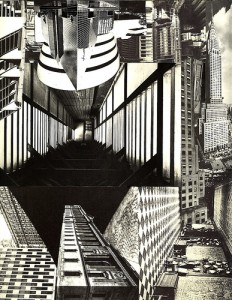 Body as City The city, with its infinite streets and pathways, a veritable circulatory system of interdependent organs leading to and from an inevitable centre. Certain cities are cultural “hearts” while others are relegated to bureaucratic “brains”. Money is the new lifeblood of a city where all avenues are directed at earning, accruing, spending, and stealing such an indispensable commodity. Some parts become disenfranchised at the notice of some greater need: hunger, thirst, pain, a slight tingling in the tips of the fingers – all are signs of a systems alert according to a more immediate threat. Ghettos, slums, favelas, gecekondus are the appendages most likely to lose feeling in times of crisis – resources and warmth make the mad rush to the brain and core, the rich neighbourhoods representing valuable real estate in the city’s functioning.
Body as City The city, with its infinite streets and pathways, a veritable circulatory system of interdependent organs leading to and from an inevitable centre. Certain cities are cultural “hearts” while others are relegated to bureaucratic “brains”. Money is the new lifeblood of a city where all avenues are directed at earning, accruing, spending, and stealing such an indispensable commodity. Some parts become disenfranchised at the notice of some greater need: hunger, thirst, pain, a slight tingling in the tips of the fingers – all are signs of a systems alert according to a more immediate threat. Ghettos, slums, favelas, gecekondus are the appendages most likely to lose feeling in times of crisis – resources and warmth make the mad rush to the brain and core, the rich neighbourhoods representing valuable real estate in the city’s functioning.
Body as Machine The modernist era brought with it a vogue of referring to everything as “a machine”: government is “a machine”, music is “a machine”, the city is “a machine”, the body is… “a machine”. The implications of this statement go beyond this space but suffice it to say that yes, a human being is “an apparatus consisting of interrelated parts with separate functions, used in the performance of some kind of work.” The heart is a machine that enables us to feel love, the brain is a machine the enables us to learn, our nerve endings are machines that enable us to distinguish the difference between a flame and a caress. Cyborgs and clones are a future already arrived, with as yet no accompanying Voigt-Kampff machines to guide us. McLuhan would agree with the premise that we create as an extension of ourselves: car as wheel as leg, camera as sight as eye. We fragment ourselves, magnify the pieces and succumb to the artificial.
vogue of referring to everything as “a machine”: government is “a machine”, music is “a machine”, the city is “a machine”, the body is… “a machine”. The implications of this statement go beyond this space but suffice it to say that yes, a human being is “an apparatus consisting of interrelated parts with separate functions, used in the performance of some kind of work.” The heart is a machine that enables us to feel love, the brain is a machine the enables us to learn, our nerve endings are machines that enable us to distinguish the difference between a flame and a caress. Cyborgs and clones are a future already arrived, with as yet no accompanying Voigt-Kampff machines to guide us. McLuhan would agree with the premise that we create as an extension of ourselves: car as wheel as leg, camera as sight as eye. We fragment ourselves, magnify the pieces and succumb to the artificial.
Common themes keep cropping up in our texts as well as the literature: the body in relation to the artificial, fragmentation, control, public/private inside/outside juxtapositions, boundaries and liminality. How do we breach the walls that we carry around with us all the time? An appropriate comparison encompassing many of these themes is the body as a structure whose boundaries at once protect us and drive us to alienation from our counterparts: the body as built environment.
The Transliterated Pudenda of Ralph Nader
In the spirit of, well, in the spirit of many things (the pornography of pornography (as I think Hung Te said it) that is The Atrocity Exhibition, Valentine’s Day, chocolate genitalia, and last class’ discussion on vagina power vs. phallic ridicule), I present to you:
An illuminating article on the pudenda entitled \”The Pudenda Agenda\”
Enjoy!
“Lonely? In Diaspar?”
One of the things we talked about last class regarding The City and the Stars was the playing off of one another between Diaspar and Lys and the dichotomies that the two represented: “the City” vs. “the Country”, “Nature” vs. “Machine”, “immortality” vs. “death”, “boundedness” vs. “space”… In particular we were talking about the difference in the social structure between the two cities. What it brought to mind for me, and what I couldn’t quite express in class but now with the aid of a computer I can (ta-dah!), were the twin terms of gemeinschaft and gesellschaft, Ferdinand Tönnies‘ sociological categories delineating two types of societies. Gemeinschaft (“community”) is a type of organization in which its members are oriented as much, if not more, towards the larger group rather than their own individual interests, and are regulated by common mores. Gemeinschafts are characterized by
a moderate division of labour, strong personal relationships, strong families, and relatively simple social institutions. In such societies there is seldom a need to enforce social control externally, due to a collective sense of loyalty individuals feel for society.
Gesellschaft (“society”/”civil society”/”association”), on the other hand, is an organizations in which the individual orients themself towards the larger grouping in terms of their own self-interest. Unlike gemeinschaften,
Gesellschaften emphasize secondary relationships rather than familial or community ties, and there is generally less individual loyalty to society. Social cohesion in Gesellschafts typically derives from a more elaborate division of labor.
Tönnies’ classifications are similar in some ways to Émile Durkheim‘s theories on mechanical vs. organic solidarity. Mechanical solidarity, similar to gemeinschaft, emphasizes similarity and collective authority; organic solidarity, similar to gesellschaft, emphasizes difference and individual initiative (The similarities, however, stop there).
Men had built cities before, but never a city such as this. Some had lasted for centuries, some for milleniums, before Time had swept away even their names. Diaspar alone had challenged Eternity, defending itself and all it sheltered against the slow attrition of the ages, the ravages of decay, and the corruption of rust.
Diaspar could be the conventional “City” trope, an ephemeral society whose foundations, both literal and ideological, are based on intangibilities. Matter can be conjured out of thin air, familial ties are affectionate at best, and even the city’s founding legends are (spoiler alert) merely that, legends created to stunt its citizens’ sense of curiosity, exploration and adventure. Like a gesellschaft society, the citizens of Diaspar feel a lessened connection with each other. Hilvar’s musings on the city reflect his general feelings of loneliness among a sea of people:
Within a few days of arriving in Diaspar, Hilvar had met more people than in his entire life. Met them – and had grown to know none. Because they were so crowded together, the inhabitants of the city maintained a reserve that was hard to penetrate.
Lys, on the other hand, couldn’t be more different. As opposed to the millions of Diaspar, the small village of Airlee is composed of less than a thousand. They have shunned the possibility of immortality and retain the cycles of birth and death as well as the range of ages in between, exposing Alvin to states of the human condition (childhood, old age) that he had previously been unfamiliar with. The also rely less on technology and as a consequence, retain a skill that the citizens of Diaspar now only have when dealing with machines: the ability to communicate telepathically. The citizens of Lys, like people in a gemeinschaft society, are thus more collectively integrated.
The “Country” trope that Lys seems to suggest brings up something that Hung-Te touched on in class: though Tönnies doesn’t seem to be making a value judgement between the two types of organization, Clarke seems to be. As a brief end note: did anyone else get the Rousseaunian noble savage vibe? Rousseau’s theory of Natural Man suggests that we were better off before society made us “civilized”: we were stronger, faster, could see without the aid of glasses, etc. The juxtaposition between Diaspar and Lys can’t help but make the reader think that the latter comes out on top: they’re more intelligent, more self-reliant, and let’s not forget: they can read minds. Any ideas on what Clarke’s vision of the future could suggest in that respect?
Down the Rabbit Hole of Techno-Orientalism
What started out as a search for the Tagalog in Star Wars turned into a bizarre backward-and-forwarding of Google searches about something we touched on the other day: the presence of “Asian-ness” and Orientalism in science fiction. Some intriguing things I found (which Hung Te might know more about, having expressed interest in class?):
\”0/1 v. Zion: Techno-Orientalism in \’The Matrix\’\” — An essay presented at the Visualizing the City Symposium at the University of Manchester in 2005. A choice quote that has to do with the films we just happened to have watched:
Hegel famously wrote in The Philosophy of History, “The History of the World travels from East to West, for Europe is absolutely the end of History, Asia the beginning” (103-04). U.S. and European science-fiction filmmakers, clearly not Hegelians, have assumed the opposite to be the case: to them, the future is Asian.
Lisa Nakamura, borrowing the term from Greta Niu, calls this “techno-orientalism”: sci-fi films and fictions, writes Nakamura, use “images of Japanese geishas, ninjas, and samurai warriors” to “establish the distinctive look and feel of a cyberpunk future,” resulting in “a high-tech variety of racial stereotyping” (Nakamura 63). Nakamura locates the beginnings of cinematic techno-orientalism in Ridley Scott’s 1982 Blade Runner, but Western filmmakers began using Asian cultural tropes to signify the (often-dystopic, always-radically-Other) future of humankind at least as early as the 1920s, when the first of the Fu Manchu pictures was released, and Fritz Lang’s 1927 Metropolis opened, introducing the Robot Maria, as David Desser says, “in a nightclub of ‘Oriental splendour’, the Yoshiwara (the name of the traditional pleasure quarter of Japan’s Edo, now Tokyo)” (Desser 82-83).
Writer gailderecho’s assertion in the beginning about science-fiction filmmakers exoticizing the future represents a shift in Orientalism:
Techno-Orientalism: Shattering the Mirror of Itself — Maya Kovskaya explains:
As media critics Morley and Robins have noted, with the rise of Information Capitalism and Japan’s technological ascendancy, the functioning of Orientalism as a sign was altered by its combination with technology. Through the inversion of meanings attendant to Techno-Orientalism, Japan, and now the rapidly developing Greater Asia, has become a sign of the (technologically advanced?) future, rather than the (backward?) past, presaging a shift in power relations and alignment of new global communities. Toshiya Ueno argues that Techno-Orientalism functions as a “a semi-transparent or two-way mirror,” through which ‘Orient’ and ‘Occident’ apprehend each other, forming invidious images of an Other against which a self is constituted.
And (I don’t remember quite how this happened) I was inexplicably led back to the beginning of everything – our class discussion on Blade Runner:
Johnny – any thoughts?

